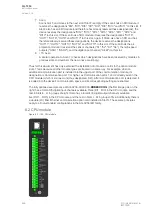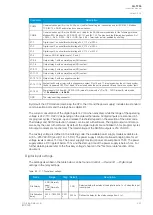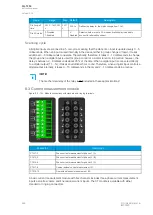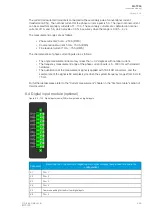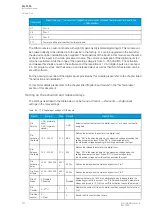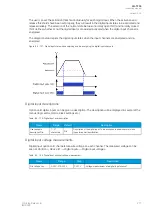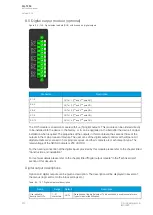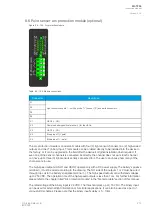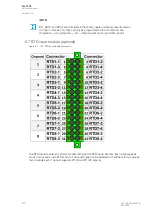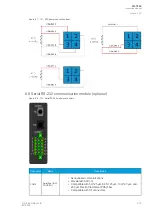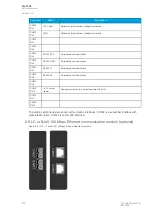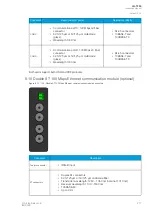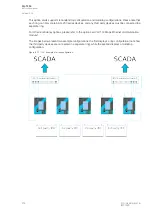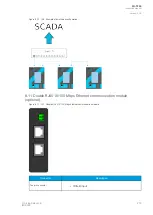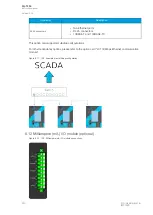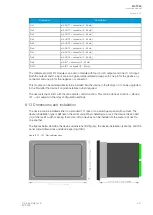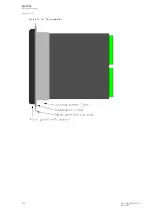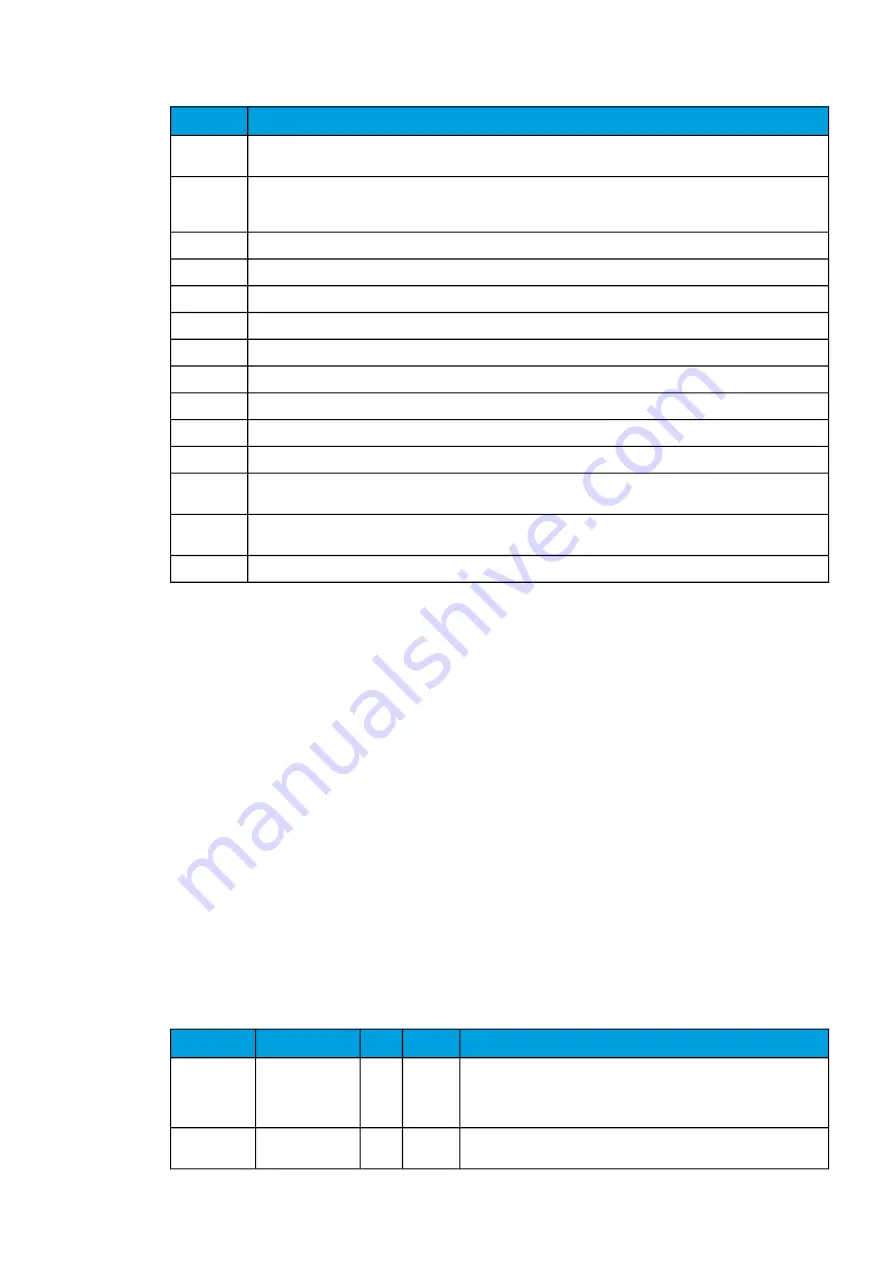
Connector
Description
COM A
Communication port A, or the RJ-45 port. Used for the setting tool connection and for IEC 61850, Modbus/
TCP, IEC 104, DNP3 and station bus communications.
COM B
Communication port B, or the RS-485 port. Used for the SCADA communications for the following protocols:
Modbus/RTU, Modbus I/O, SPA, DNP3, IEC 101 and IEC 103. The pins have the following designations: Pin 1
= DATA +, Pin 2 = DATA –, Pin 3 = GND, Pins 4 & 5 = Terminator resistor enabled by shorting.
X1-1
Digital input 1, nominal threshold voltage 24 V, 110 V or 220 V.
X1-2
Digital input 2, nominal threshold voltage 24 V, 110 V or 220 V.
X1-3
Digital input 3, nominal threshold voltage 24 V, 110 V or 220 V.
X1-4
Common GND for digital inputs 1, 2 and 3.
X1-5:6
Output relay 1, with a normally open (NO) contact.
X1-7:8
Output relay 2, with a normally open (NO) contact.
X1-9:10
Output relay 3, with a normally open (NO) contact.
X1-11:12
Output relay 4, with a normally open (NO) contact.
X1-13:14:15 Output relay 5, with a changeover contact.
X1-16:17:18 System fault's output relay, with a changeover contact. Pins 16 and 17 are closed when the unit has a system
fault or is powered OFF. Pins 16 and 18 are closed when the unit is powered ON and there is no system fault.
X1-19:20
Power supply IN. Either 85…265 VAC/DC (model A; order code "H") or 18…75 DC (model B; order code
"L"). PPositiv
ositive side
e side (+) tto P
o Pin 20.
in 20.
GND
The relay's earthing connector.
By default, the CPU module (combining the CPU, the I/O and the power supply) includes two standard
communication ports and the relay's basic digital I/O.
The current consumption of the digital inputs is 2 mA when activated, while the range of the operating
voltage is 24 V/110 V/220 V depending on the ordered hardware. All digital inputs are scannced in 5
ms program cycles. Their pick-up and release thresholds depend on the selection of the order code.
Their delays and NO/NC selection, however, can be set with software. The digital output controls are
also set by the user with software. By default, the digital outputs are controlled in 5 ms program cycles.
All output contacts are mechanical. The rated voltage of the NO/NC outputs is 250 VAC/DC.
The auxiliary voltage is defined in the ordering code: the available power supply models available are
A (85…265 VAC/DC) and B (18…75 DC). The power suppy's minimum allowed bridging time for all
voltage levels is above 150 ms. The power supply's maximum power consumption is 15 W. The power
supply allows a DC ripple of below 15 % and the start-up time of the power supply is below 5 ms. For
further details, please refer to the "Auxiliary voltage" chapter in the "Technical data" section of this
document.
Digital input settings
The settings described in the table below can be found at
Control
→
Device I/O
→
Digital input
settings in the relay settings.
Table. 8.2 - 177. Digital input settings.
Name
Range
Step Default
Description
DIx Polarity
0: NO (Normally
open)
1: NC (Normally
closed)
-
0: NO
Selects whether the status of the digital input is 1 or 0 when the input
is energized.
DIx Activation
delay
0.000…1800.000
s
0.001
s
0.000 s
Defines the delay for the status change from 0 to 1.
A
AQ
Q-T256
-T256
Instruction manual
Version: 2.06
© Arcteq Relays Ltd
IM00028
267
Summary of Contents for AQ-T256
Page 1: ...AQ T256 Transformer protection IED Instruction manual...
Page 2: ......














